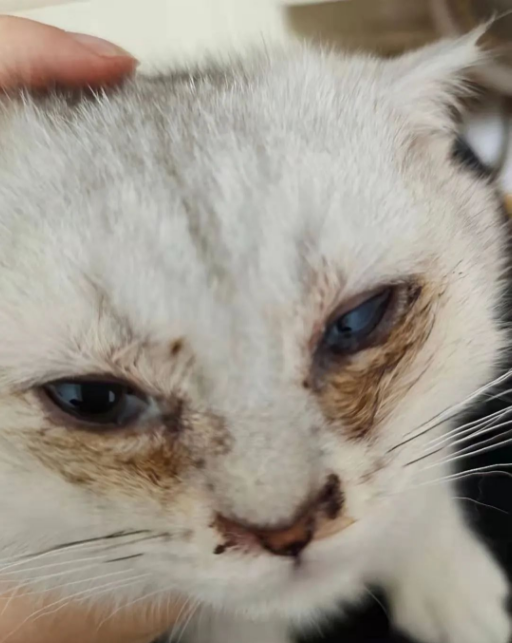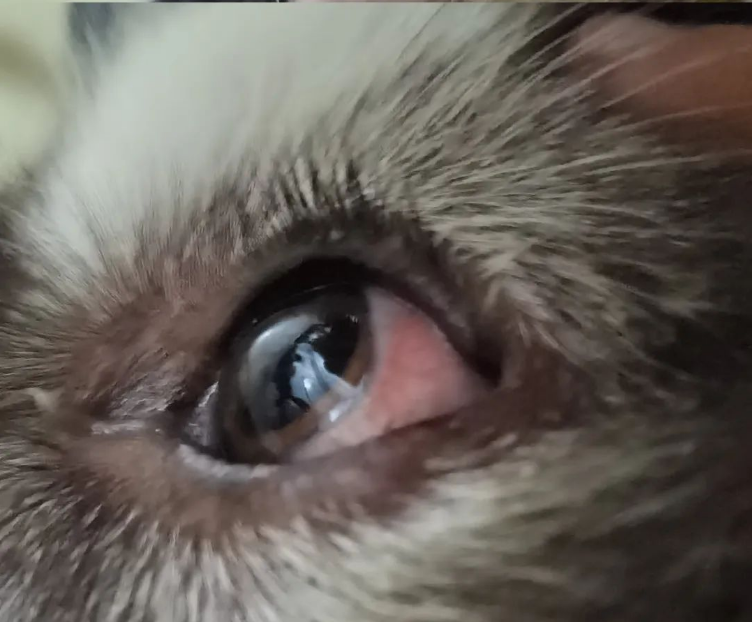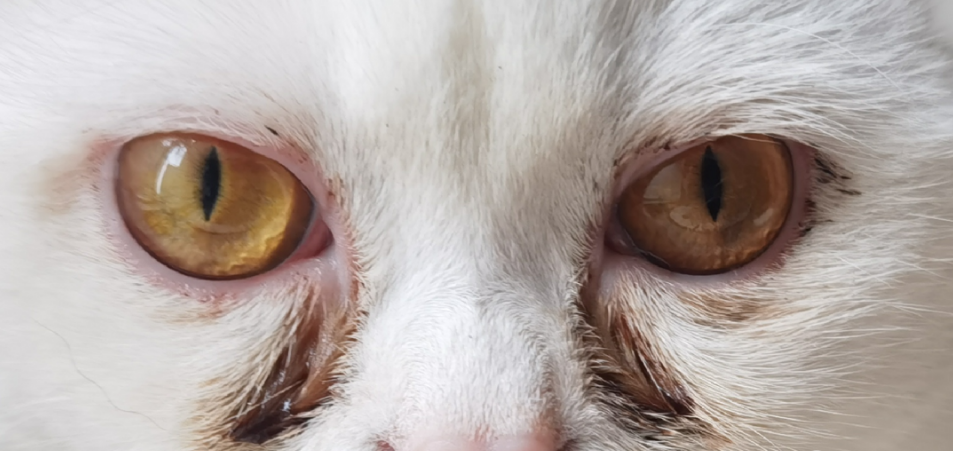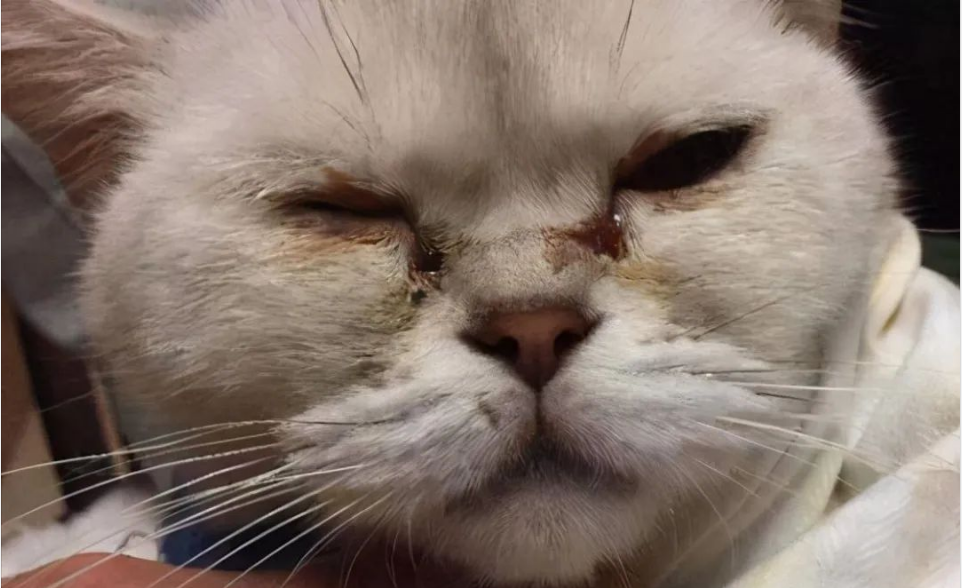What is the disease of pus and tear marks in cat eyes?
1、Is tear marks a disease or normal?
Recently, I have been working a lot. When my eyes are tired, they will secrete some sticky tears. I need to drop artificial tears Eye drop many times a day to moisturize my eyes. This reminds me of some of the most common eye diseases of cats, a lot of pus tears and thick tear stains. In daily pet disease counseling, pet owners often ask what’s wrong with their eyes? Some say the tear marks are too severe, some say the eyes cannot be opened, and some even show obvious swelling. The eye problems of cats are much more complex than those of dogs, some are diseases, while others are not.
First of all, when encountering cats with dirty eyes, we need to distinguish between tear marks caused by illness or turbidity caused by illness? Normal eyes also secrete tears, and in order to keep the eyes moist, tears are secreted a lot. When the secretion is low, it becomes a disease. Normal tears flow into the nasal cavity through the nasolacrimal ducts below the eyes, and most of them gradually evaporate and disappear. Tears are a very important metabolic organ in the cat’s body, second only to urine and feces, metabolizing excess minerals in the body.
When pet owners observe cats with thick tear marks, they should notice that tear marks are mostly brown or black. Why is this? In addition to moisturizing the eyes and avoiding dryness, tears are also an important method for cats to metabolize minerals. Tears dissolve a large amount of minerals, and when tears flow out, they basically flow to the hair area under the inner corner of the eye. As tears gradually evaporate, non volatile minerals will remain stuck to the hair. Some online reports suggest that heavy tear marks are caused by excessive salt consumption, which is completely incorrect. The residue of salt is a white crystal that is difficult to see after drying with sodium chloride, while tear marks are brown and black. These are the iron elements in tears that gradually form iron oxide on the hair after encountering oxygen. So when the tear marks are heavy, it is to reduce the intake of minerals in food instead of salt.
Simple heavy tear marks are not necessarily caused by eye diseases, as long as you adjust your diet appropriately, drink plenty of water, and wipe your face frequently.
1、Infectious virus causing eye diseases
How to distinguish whether the dirt around the cat’s eyes is caused by diseases or non disease reasons in daily life? Just observe a few aspects: 1. Open your eyelids to see if there is a large amount of bloodshot in the white part of your eyes? 2: Observe whether the eyeballs are covered with white mist or cyan blue; 3: Is the eye swollen and protruding when viewed from the side? Or cannot it be fully opened, with varying sizes of left and right eyes? 4: Do cats frequently scratch their eyes and face with their front paws? Although it’s similar to washing a face, upon closer inspection, it’s completely different; 5: Wipe your tears with a napkin and observe if there is pus?
Any of the above may indicate that his eyes are indeed uncomfortable due to illness; However, many diseases may not necessarily be eye diseases, but may also be infectious diseases, such as the most common herpes virus and calicivirus in cats.
Feline herpesvirus, also known as viral rhinobronchitis, is widespread all over the world. The feline herpesvirus replicates and propagates within the epithelial cells of the conjunctiva and upper respiratory tract, as well as within neuronal cells. The former can recover, while the latter will remain latent for life. Generally speaking, the nasal branch of a cat is a newly bought cat that has contracted the disease in the seller’s previous home. It is mainly transmitted through the cat’s sneezing, nasal mucus, and saliva. The symptoms mainly manifest in the eyes and nose, with pus and tears, swelling of the eyes, a large amount of nasal discharge, frequent sneezing, and occasional fever, fatigue, and decreased appetite. The survival rate and infectivity of herpes virus are very strong. In daily environments, the virus can maintain initial infection for 5 months at temperatures below 4 degrees Celsius; 25 degrees Celsius can maintain soft staining for one month; 37 degree infectivity reduced to 3 hours; At 56 degrees, the infectivity of the virus can only last for 5 minutes.
Cat calicivirus is a highly contagious disease that exists in various groups of cats around the world. The prevalence rate of indoor cats is about 10%, while the prevalence rate in gathering places such as cat houses is as high as 30-40%. It is mainly manifested in pus discharge from the eyes, redness and swelling in the mouth, and nasal and nasal mucus. The most prominent feature is the appearance of redness and swelling or blisters in the tongue and mouth, forming ulcers. Mild feline calicivirus can be recovered through treatment and the body’s strong resistance. Most cases still have a contagious ability to expel the virus for up to 30 days or even several years after recovery. Severe calicivirus can lead to systemic multiple organ infections, ultimately leading to death. Cat calicivirus is a very terrifying infectious disease that is difficult to treat. Vaccine prevention, although ineffective, is the only solution.
Post time: Jul-28-2023




